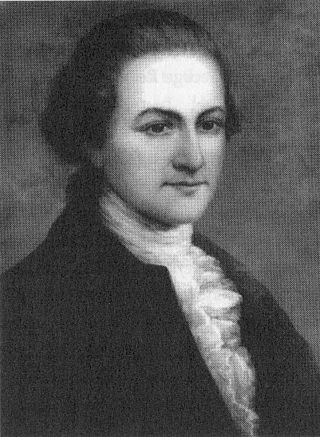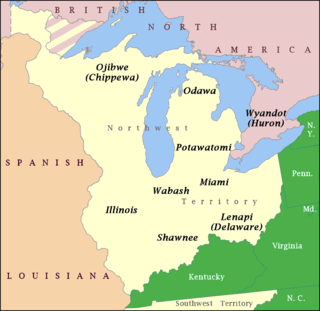| |||||
| Decades: | |||||
|---|---|---|---|---|---|
| See also: | |||||
| 1785 in the United States |
| 1785 in U.S. states |
|---|
| States |
| List of years in the United States |
Events from the year 1785 in the United States.
| |||||
| Decades: | |||||
|---|---|---|---|---|---|
| See also: | |||||
| 1785 in the United States |
| 1785 in U.S. states |
|---|
| States |
| List of years in the United States |
Events from the year 1785 in the United States.

The Articles of Confederation and Perpetual Union was an agreement among the 13 states of the United States, formerly the Thirteen Colonies, that served as the nation's first frame of government. It was debated by the Second Continental Congress at Independence Hall in Philadelphia between July 1776 and November 1777, and finalized by the Congress on November 15, 1777. It came into force on March 1, 1781, after being ratified by all 13 colonial states. A guiding principle of the Articles was the establishment and preservation of the independence and sovereignty of the states. The Articles consciously established a weak central government, affording it only those powers the former colonies had recognized as belonging to king and parliament. The document provided clearly written rules for how the states' league of friendship, known as the Perpetual Union, would be organized.

Richard Henry Lee was an American statesman and Founding Father from Virginia, best known for the June 1776 Lee Resolution, the motion in the Second Continental Congress calling for the colonies' independence from Great Britain leading to the United States Declaration of Independence, which he signed. Lee also served a one-year term as the president of the Continental Congress, was a signatory to the Continental Association and the Articles of Confederation, and was a United States Senator from Virginia from 1789 to 1792, serving part of that time as the second president pro tempore of the upper house.

George Walton, a Founding Father of the United States, signed the United States Declaration of Independence while representing Georgia in the Continental Congress. Walton also served briefly as the second chief executive of Georgia in 1779 and was again named governor in 1789–1790. In 1795, he was appointed to the U.S. Senate, to complete the unexpired term of a senator who had resigned.

Richard Bassett was an American politician, attorney, slave owner and later abolitionist, veteran of the American Revolution, signer of the United States Constitution, and one of the Founding Fathers of America. He also served as United States Senator from Delaware, chief justice of the Delaware Court of Common Pleas, governor of Delaware and a United States circuit judge of the United States Circuit Court for the Third Circuit.

John Middleton "Jack" Vining was an American lawyer and politician from Dover, in Kent County, Delaware. He was a Continental Congressman from Delaware, and a member of the Federalist Party, who served in the Delaware General Assembly and as United States Representative and United States Senator from Delaware.

The Northwestern Confederacy, or Northwestern Indian Confederacy, was a loose confederacy of Native Americans in the Great Lakes region of the United States created after the American Revolutionary War. Formally, the confederacy referred to itself as the United Indian Nations, at their Confederate Council. It was known infrequently as the Miami Confederacy since many contemporaneous federal officials overestimated the influence and numerical strength of the Miami tribes based on the size of their principal city, Kekionga.
Nathaniel Pendleton was a United States district judge of the United States District Court for the District of Georgia.
Events from the year 1777 in the United States.
Events from the year 1781 in the United States. This year marked the beginning of government under the Articles of Confederation as well as the surrender of British armed forces in the American Revolution.
Events from the year 1783 in the United States. The American Revolution officially ended with the Treaty of Paris.
Events from the year 1784 in the United States.
Events from the year 1786 in the United States.
Events from the year 1787 in the United States. The United States Constitution was written and the ratification process began.
Events from the year 1788 in the United States.
Events from the year 1789 in the United States. The Articles of Confederation, the agreement under which the nation's government had been operating since 1781, was superseded by the Constitution in March of this year.
Events from the year 1796 in the United States.
Events from the year 1799 in the United States.
Events from the year 1858 in the United States.
Events from the year 1869 in the United States.